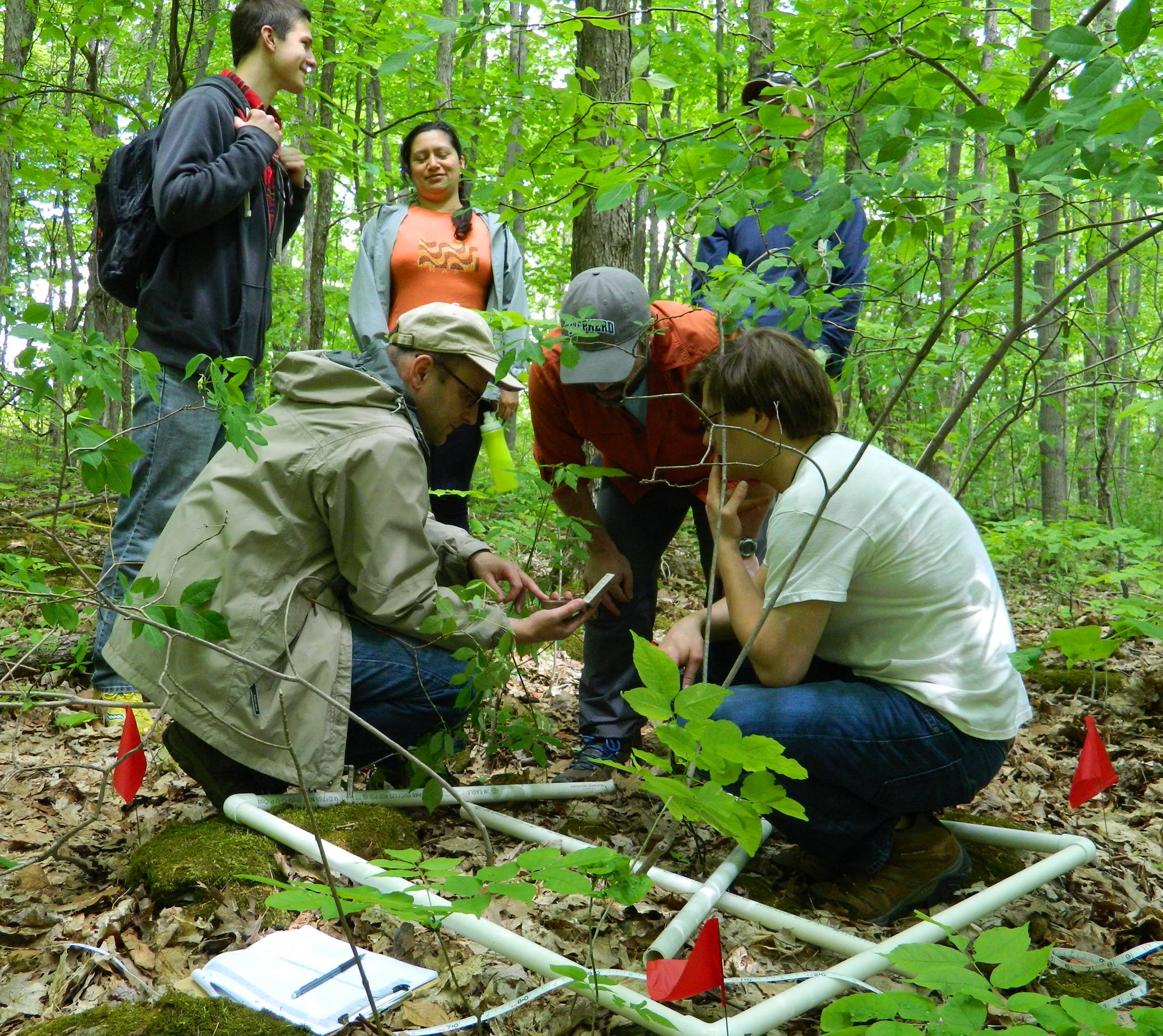      |
||||||
| Dovciak Lab in Plant Ecology | ||||||
State
University of New York, College of Environmental Science & Forestry,
Syracuse, NY
Department of Environmental and Forest Biology — SUNY ESF —
1 Forestry Drive — Syracuse — NY 13210
|
||||||
| Home |
||||||
Welcome to the Dovciak Lab! |
||||
 |
 |
 |
||
| Lab surveying understory plants in a northern hardwood forest in New York. | Lab retreat in the Adirondacks (left to right): Margaret, Julie, Mike, Martin, Monica, and Mariano (March 2016). | Lab reunion at ESA 2015 (left to right): Julie, Jay, Juan Carlos, Monica, Lisa, and Mark. | ||
| We are a group of scientists and students from diverse backgrounds with a shared passion for ecology and for plant communities and forest ecosystems. We study how global environmental changes in climate, land-use (including forest management), biogeochemical cycles, ecosystem trophic structure, and invasions of non-native species affect biodiversity and the structure and function of terrestrial plant communities and forested ecosystems. Our goal is to advance ecological theory and to apply it in improving practices in ecosystem management, restoration, and nature conservation. We are interested in conceptual questions rather than particular taxa or ecosystems; consequently, our studies examine diverse plant groups (e.g., trees, herbs, and bryophytes) in varied ecological settings (e.g., temperate conifer and deciduous forests, tropical dry forests, old-fields, and tree-grass ecosystems) and locations (e.g., eastern U.S., Midwest, and the Pacific Northwest; northwestern Mexico; Central Europe). We often study plant-animal interactions to address the effects of animals on plants (e.g., deer herbivory) or the role of plants as a habitat for animals (e.g., ants or reptiles). Our research topics fall within three broad themes: | ||||
 |
||||
Details about our main research projects are here. |
||||
 |
||||

Photo by Bruce Breitmeyer. |
||||
Interested
in joining our lab? Click here for more information. |
||||
| © 2019 Dovciak Lab. Some materials may be protected by other copyrights and may not be reposted without the permission of the original copyright holder. | ||||